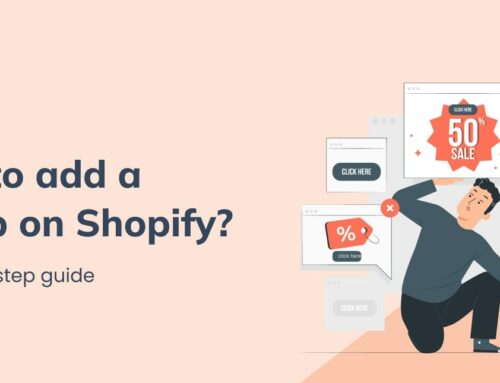Shopify has many ready-made features and economic templates, but does that imply they’ll help you succeed in Shopify store development? Is it preferable to hire an agency that specializes in eCommerce?
Choosing the appropriate website for your business may be a perplexing and challenging procedure, no matter what circumstance you’re in. Besides, if you want your store to stand out from the crowd, utilizing the same design as dozens or hundreds of other retailers is not ideal.
According to Shopify website data, there were about 2.3 million Shopify clients as of June 2021. As this statistic shows, having a Shopify website online can provide you access to millions of clients all over the world. However, most business owners are apprehensive about developing a website on the Shopify platform because they are uninformed of the overall cost.
As a result, this article will approach the problem of helping you consider Shopify store setup intelligently and the cost.
Let’s get started now!
Contents
Shopify Store Development With Setup Manually
If you have a lot of spare time and want to understand the back end of your Shopify store, doing setup yourself may be a lot of fun and highly gratifying because you’ll be learning new things and gaining new abilities. Taking some Shopify development tutorials is a great way to learn how to set up your own store.
Shopify costs start from $29.99 per month and include a free domain and hosting. However, if you want your clients to have the most outstanding experience possible when visiting your online store, we recommend purchasing your domain name.
Therefore, while it is true that Shopify store development can be time-consuming and require many lengthy steps, Shopify’s ease of use is one of the reasons for its enormous success as an e-commerce platform.
Yes, with Shopify, store setup has never been more straightforward, and here’s how to get started.
NOTE: If you have already launched a website and want to switch to Shopify, there are three ways to migrate quickly. However, we still recommend using the Shopify migration service to avoid data loss. Whereby, Shopify Migration will take care of everything, assuring a seamless and secure Shopify conversion.

Step 1: Create Your Shopify Account
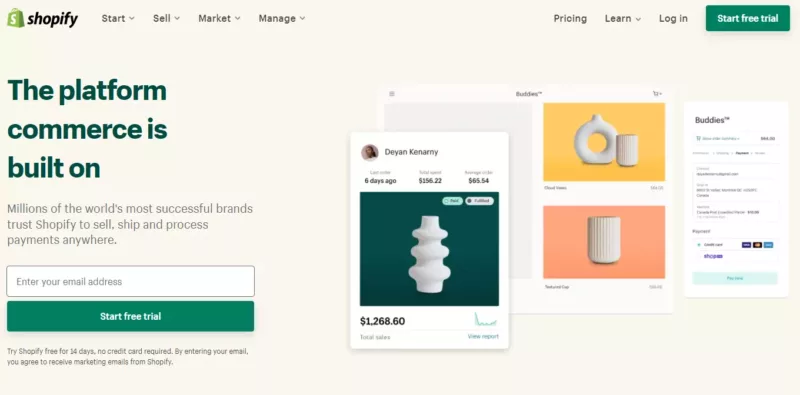
Go to the Shopify website. You’ll be directed to Shopify local edition, depending on your location, where you’ll be able to start your free trial. To do so, navigate to your webpage’s top-right corner and click the icon. After that, you’ll be asked to fill out some basic information before deciding on a name for your store.
Keep in mind that your Shopify store name acts as your company’s identification, so pick a name that matches. The store’s name must be a name that is not available, so choose carefully.
Check out Shopify Pricing Plans to find out which is the right choice for your store to get started.
Step 2: Customize Your Shopify Store
To maximize client traffic and shopping experience, you would pay careful attention to the interiors of any online business you open.
Begin by choosing a basic theme from Shopify’s many virtual store themes, then customize it to meet your brand’s design and look.
Additionally, the Shopify Theme Store has over 100 themes to choose from, many of which are free. This is especially beneficial for beginners that may not have the financial capacity to spend on more expensive themes. Both the free and paid versions have customizable themes, ensuring that your e-store appears precisely the way you want it to display.
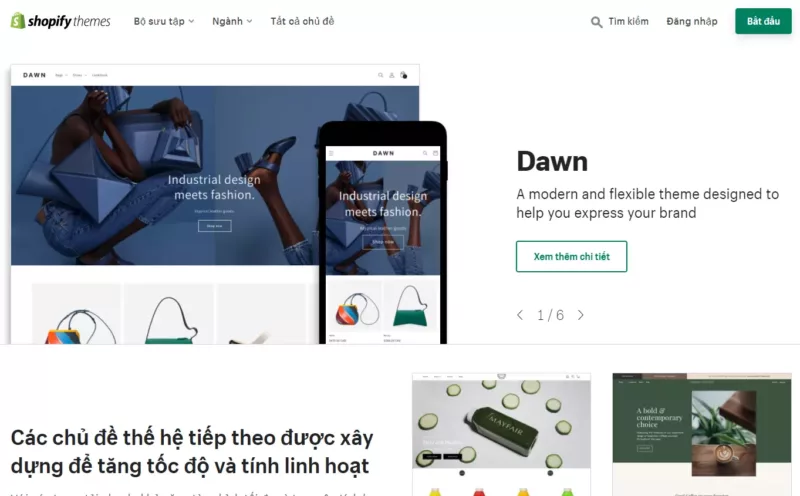
However, you should only use free themes because premium themes will almost always require development and are far more complicated in design, necessitating some coding.
As a result, picking the correct free Shopify template theme now will save you a lot of money afterward. Test as many as possible to guarantee you’ve chosen the most acceptable option for presenting your products to the target audience.
In fact, you can choose from several free themes that Shopify offers, but we recommend Debut or Brooklyn if you’re doing it yourself.
If you have more money to invest, Shopify has a network of “Shopify Experts” who can help you with the more delicate customization elements. For example, BSS Commerce, a Shopify store development agency with over nine years of expertise and more than 21,000 customers globally, offers to improve user experience and conversions by customizing Shopify themes or UX/UI to match your brand identity. Besides, provide customers with responsive, user-friendly, and engaging storefronts.

Step 3: Upload Products To Your Shopify Store
On the left corner of your admin dashboard, there is a bar named “Products.” This option allows you to either add new products to your listings or choose from your current inventory. This part can include the product’s name, a description of what you’re offering, images, pricing, and more.
Also, you can list any versions of a product that you have on hand using Shopify. You may also include SEO, shipping details, and more. You can even show inventory so that your customers can see what’s still available.

Then, to Shopify store development, ensure all your products have been adequately categorized. You may provide, for instance, more than just garments, in which case, you will want to specify either the sex, age group, or more that you offer apparel for or other relevant information. If you provide homewares, you’ll want a distinct category for that as well.
You can also access this option from the same admin page behind the products dropdown.
Read more: How To Add Sub Collections In Shopify
Step 4: Set Up Shopify Payment
Setting up Shopify payment is the most crucial step in the Shopify Store Development process. After your products are posted and your e-commerce site is up and running, you’ll need to figure out how clients will pay you, as well as how you’ll receive money. In addition to Shopify payment gateway, you can use third-party payment solutions.
Primarily, make sure you understand the costs you’ll be charged for every transaction, as well as the types of payment channels, such as cards accepted and other details. Start by carefully examining your user base and demographics, and then, if necessary, perform a poll to learn which payment methods your clients are most likely to use. So, you can easily then choose an appropriate option.
Step 5: Test Your Order System
Finally, Shopify provides a “Bogus Gateway” feature, which allows you to test if your order system is up and running.
To test that your payment and ordering systems are running and operating appropriately, place an order with authentic payment information, just like you would on any other eCommerce website. Proceed to make a purchase; however, the trick is to cancel the transaction far in advance to ensure that your funds are returned. The next step is to check your order system from the payment gateway’s back end to ensure everything is in working order.
Pros:
- If you don’t have much budget, constructing it yourself is less expensive than hiring a Shopify developer.
- Shopify has some valuable themes that will suffice as a starting point if you’re a very small store.
- After your Shopify site has launched, you can make adjustments or updates on your own.
Cons:
- If you don’t have any experience with store setup before, your website may appear amateurish, negatively impacting how your business is perceived.
- Building a website is a series of significant chores that sometimes feel overwhelming. Therefore, it’s usual for people to put it off for months.
- During the store development, you can take many risks if you do not have coding knowledge.
Hiring Shopify Store Development Service
While setting up a store manually involves many steps, hiring a Shopify store development service is faster and simpler. Although Shopify is an easy-to-use eCommerce platform, building a professional online store is never easy. If you think you can save this money for other things, this is probably wrong. No matter how well you run your ads and how good your store SEO is, when customers visit and don’t have a good experience, you still can’t succeed.
Also, it’s not just big businesses that should hire a Shopify development agency. Indeed, they can provide various services, from fundamental to advanced Shopify website development. However, developers can still make your store look professional and really user-friendly, even with the most basic stores.
Pros:
- There’s no need to spend time learning how to use the technology.
- The ability to customize to meet the needs of each business
- The result will be a current, professional website that appropriately portrays your business and brand and one that you can be proud of.
- On desktop, tablet, and mobile, the outstanding visitor experience will be duplicated.
- They can provide suggestions and help you avoid blunders you wouldn’t have considered on your own.
- Avoid risks as much as possible.
Cons:
- This method will demand a minimum investment of $1000 and up to $12500.
- It may be a frustrating and costly affair if you hire the incorrect developers.
Build An MVP/Basic Website
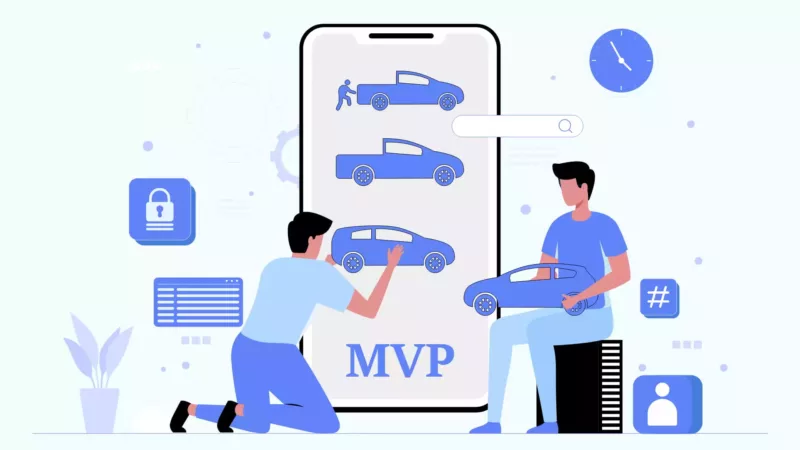
Some store owners just do not have the time for Shopify Store Development on their own. However, they may be hesitant to put large sums of money into the business before the established model makes significant revenues.
So, in this case, an MVP website, which stands for minimal variable product, is probably the best option. The website template will be chosen by you, and the developer will customize it to fit your brand and business demands.
This website is best suited for companies that need to get to market quickly but want a professional-looking website.
Overall, an MVP website is a terrific method to get your online presence up and running without putting up a lot of effort and money in the Shopify store setup.
Total Shopify store development cost:
- Shopify subscription: $29.99 per month
- Template price: $150 – $280 one-off
- Developer price: $1000 – $2500 one-off
Build A Custom Small To Medium-Sized Website
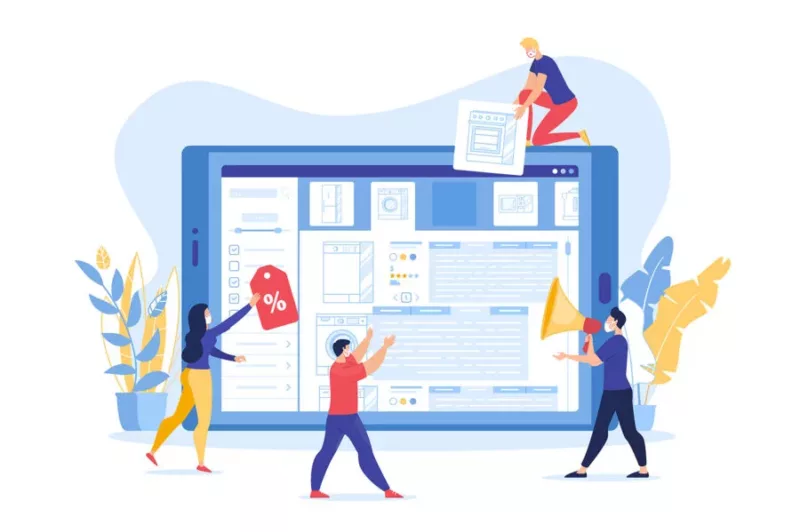
If you have a physical store where you sell goods, perhaps you’d like to start a new online revenue stream in eCommerce?
This Shopify store development option allows you to select a theme or template. This will get you 50-60% of the way to the finish line. The next step is to personalize the theme to match your company’s needs. The higher the cost, the more customization and coding you can require.
Specifically, the cost will be determined by the number of pages on the site and the necessary customization level. Custom graphics can add a wow element to your Shopify site, but they cost you more. Dynamic effects sometimes necessitate a significant amount of effort and will not be inexpensive.
Furthermore, another cause for the increased prices is design modifications. Remember that each design iteration takes time, with some requiring more than 20 hours of solid coding. Therefore, it’s critical to stick as close to the original brief as feasible to keep expenses down.
Total cost:
- Shopify subscription: from $29.99 per month
- Template price: $150 – $280 one-off
- Developer price: $3000 – $7000 one-off
Build A Fully Custom Large Website

This Shopify store development option is for you if you’re a large-scale Shopify website with hundreds of pages, custom design layouts, bespoke imagery, unique functionality, and supplemental features (such as personalized development, blog integration, multimedia creation, etc.). For a Shopify freelancer or web developer to execute your project, you may expect to pay anywhere between $8000 and $15000.
These initiatives usually begin once the UI/UX design is complete, and the cost of this is not included in the developer’s fee. Accordingly, the UI/UX designer will create a prototype (mockup) website, which will subsequently be turned into a working website that runs on all devices by Shopify developers.
As a result, large-scale project development can take months, depending on the complexity of the construction, which can ultimately affect your company’s web development costs.
Total cost:
- Shopify subscription: from $29.99 per month
- Template price: $150 – $280 one-off
- Developer price: $8000 – $15,000 one-off
As mentioned above, if you spend a lot of money on Shopify store development but can’t find a reputable developer, it still won’t work. In particular, BSS Shopify Commerce is a long-time Shopify store development company, so BSS is confident with solid knowledge and information to provide the best service to customers. BSS Commerce will help you create simple, sales-driven, and robust online businesses as a leading development agency with over 9 years of experience from the small stuff to the big picture.
To put it more precisely, BSS provides a full range of services such as Shopify website development & customization, apps development & customization, theme development, 3rd-party integration, Shopify migration, upgrade & maintenance.
How Much Does It Cost For Shopify Store Development?
Most agencies will charge between $500 and $1,000 for basic ala carte Shopify graphics or template building for essential Shopify website development. In contrast, you might be able to locate an up-and-coming agency for $500 to $2,000 to design your entire Shopify store. For a custom-designed Shopify website, most established Shopify store development services charge between $5,000 and $20,000.
Inherently, Shopify store setup follows a range of different page templates. Separate product pages, category pages, blog pages, and other pages are required for primary Shopify eCommerce sites. Some Shopify store owners may create a single product page for all of their products, while others may prefer custom-designed product pages for their most significant pages.
Therefore, the number of unique page designs and bespoke functionality required beyond Shopify’s built-in features may add to the price of a designed and created Shopify business.

Overall, the following are the costs of Shopify store development:
- Monthly Shopify Subscription: Ranges from $29.99 per month.
- Theme/Template: Shopify has a lot of inexpensive options and some free basic templates/themes. There were over 100 templates available in Shopify’s theme store when publishing this article, ten of which were free. Besides, paid templates on the Shopify theme store usually range from $150 to $280.
- Custom Shopify Website Design: Typically starts in the $1000 – $15,000 range.
- Additional Development Needs: Including 3rd-party apps, or requiring other development work, etc.
- Shopify Digital Marketing: You must market your Shopify store to attract customers. To keep digital marketing services such as SEO, expect to pay a reputable agency several thousand dollars each month.
For a larger business, Shopify Plus Development Service is truly a worth investment in 2023.
Conclusion
In summary, my recommendation is to hire a professional for Shopify website development. As of 2021, creating a current, professional Shopify eCommerce website that actually generates sales for your company is far more complex and time-consuming than you might believe.
If you’re serious about your business, the time and money you invest in your website will pay off for years to come. But, if you don’t have enough budget to invest in an expert, then, by all means, try your best with the instructions above.
On the other hand, engaging a professional Shopify store development company to build your website will save you a lot of effort, money, and risks if your business can afford it. In the end, a professionally built website will outperform a Shopify store set up manually. Therefore, consider Shopify store development options carefully.



